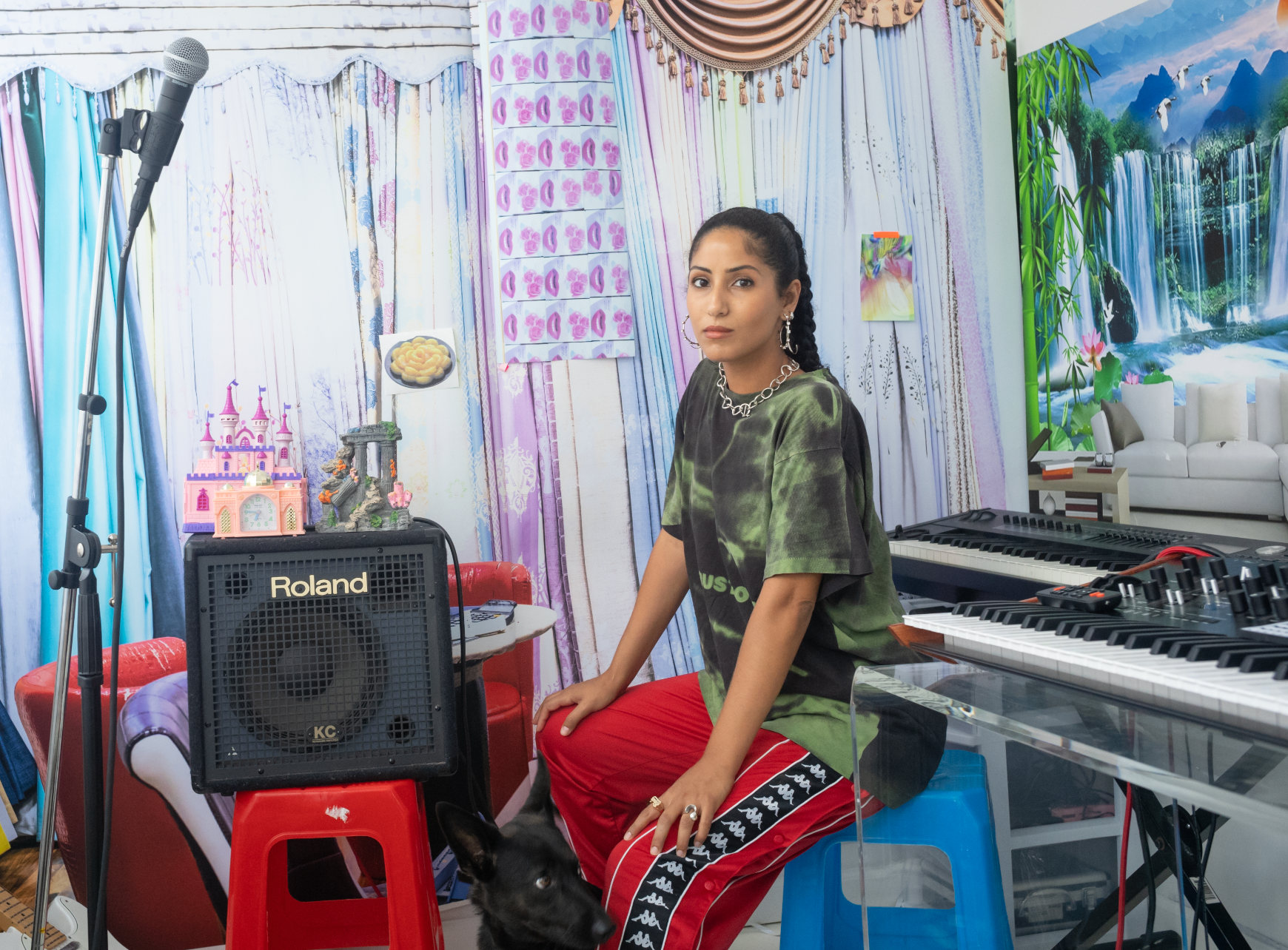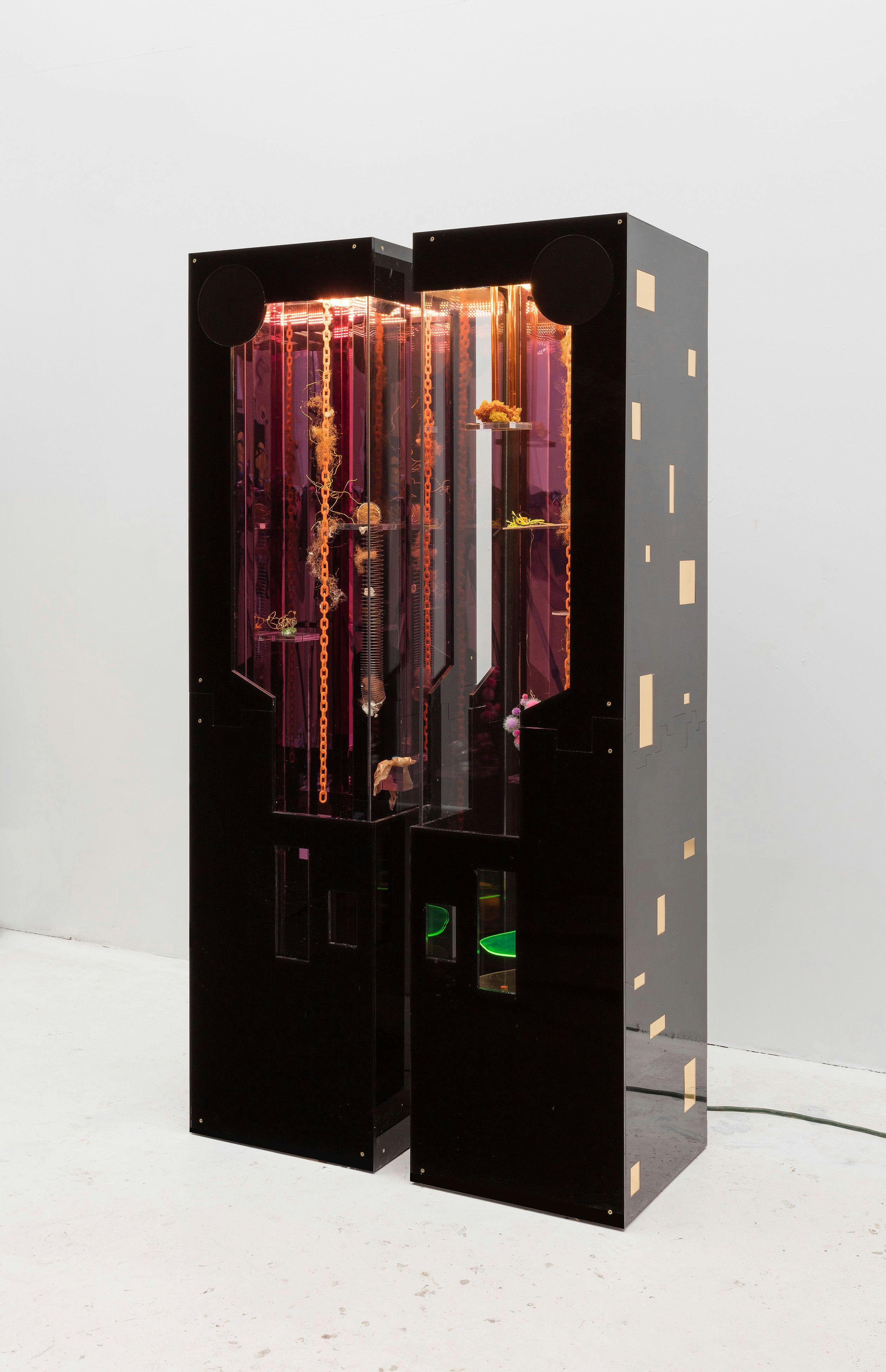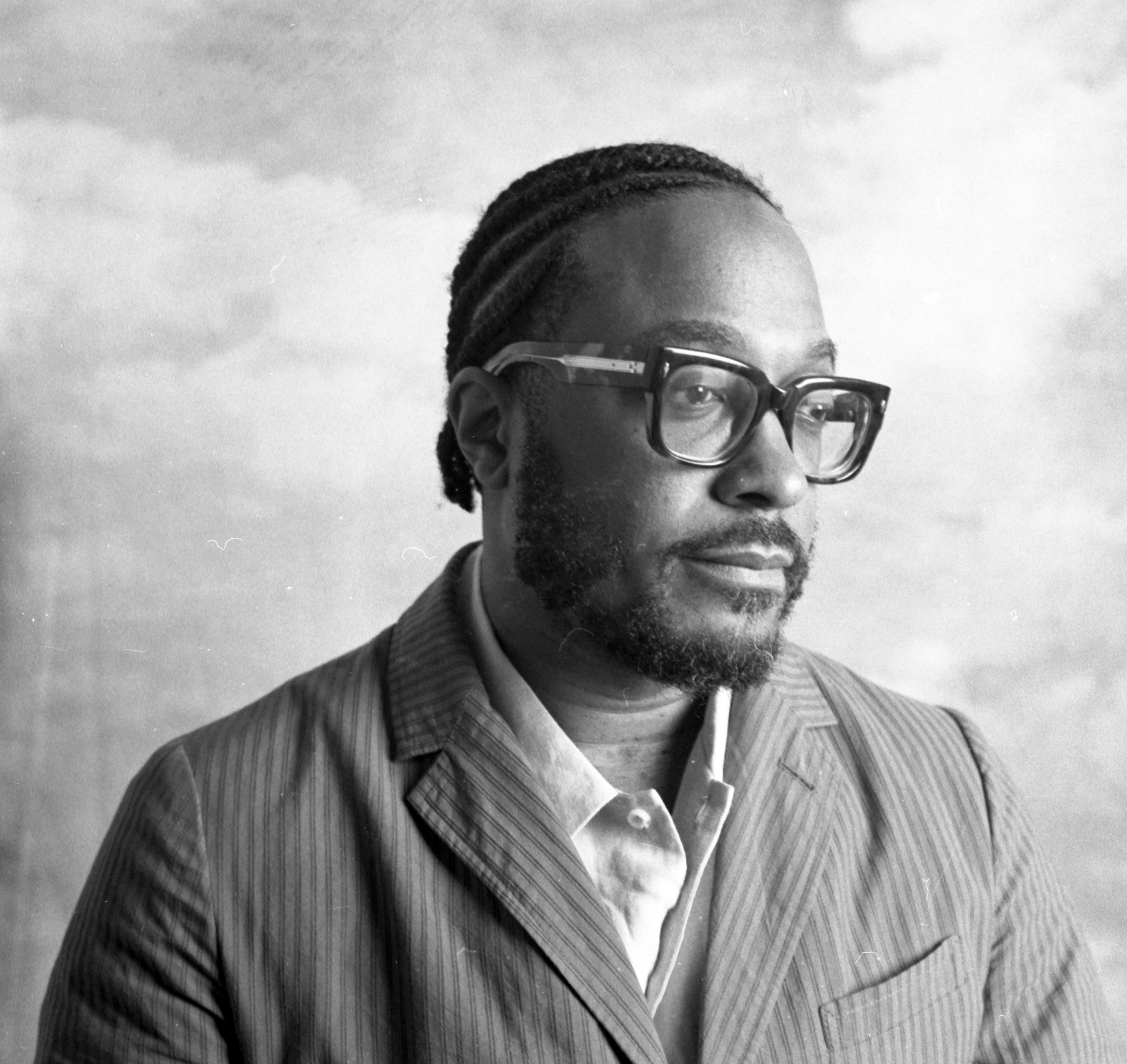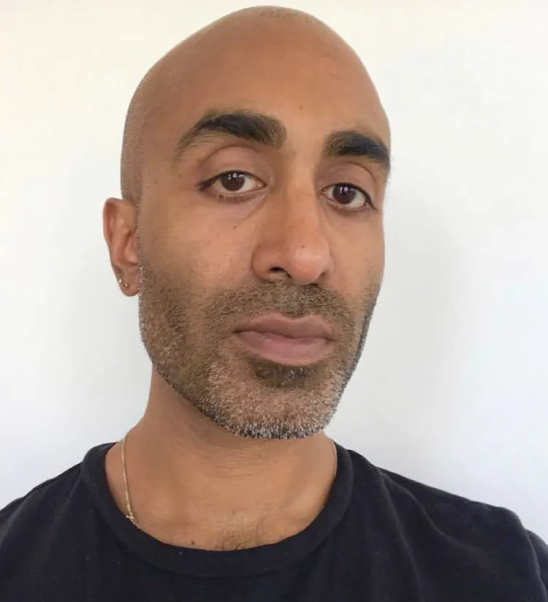Revisiting the Studio Visit
Ajay Kurian
Farah Al Qasimi in her studio. Photo courtesy of the artist.

I first understood the studio visit as the beating heart of an aesthetic education in Rirkrit Tiravanija’s Sculpture II class. This was 2005, Rirkrit was at the height of his fame, and it felt like Columbia’s entire studio art program was clamoring to see what lay behind the persona—whether there might be some keys to his success, his ideas, or even his person.
What followed felt almost like a series of deferrals. We’d most often just go to lunch where we’d all talk to one another, everyone quietly vying for seats closest to the teacher. Some days we’d cook, other days we’d just eat. Other days he’d show films. It was as if the class was just a way to pass the time. Often, midway through, I would request to go work in my studio. Others did the same. At the time I felt that the class wasn’t really a class at all, until one day I finally had a scheduled studio visit with Rirkrit.
I had no idea what to expect. Considering his class structure, or lack thereof, I assumed I’d encounter a similar laissez-faire attitude in a studio visit. I was wrong. For context, a studio visit is informally one of the sacred foundations of an arts education. It’s your chance to have a one-on-one meeting with your professor and receive feedback. Sometimes, these visits can be fortifying, other times they can be devastatingly crushing. The process of learning is more holistic, not based on obtaining facts or skills necessarily, but an overall know-how—ways of thinking through problems, and thinking with materials.
I had worked tirelessly to finish a piece to present for this visit in particular. It was a piece that I thought of as a phonebooth-meets-Medieval-reliquary, where the phone was replaced by three cast-plaster microphones. It was a bad sculpture. Nevertheless, I was invested and proud and waiting to hear Rirkrit’s take. He spent time closely observing the piece and soberly addressed what I would soon realize is one of the most important parts of sculpture: points of contact. How does the steel transition into wood? How do the cast plaster microphones connect to the “booth”? How do things literally connect?
It was at these points of contact that it became apparent that not only was my actual construction somewhat questionable, but underlying those badly shimmed foundations were ideas that had yet to fully form. The meeting points were rushed, not fully realized, and in noting this it was easier to discuss the range of ways in which I could bring more focus to the work and to my own ideas.
It was a profoundly illuminating moment, mainly because his approach didn’t begin and end in criticism, or with his ego. He looked and considered, and realized that while there were many valuable things going on in the piece, there were fundamental flaws that when addressed, might lead me to where I needed to go, without him having to explicitly suggest it. In order to help someone unlock what they’re capable of, you need to follow that maker’s logic, not your own. Rirkrit followed mine to the heart of the sculpture. He showed me what needed attention, and in doing so allowed me to find my own way. It was a master class in one kind of studio visit.

Eighteen years later, the pandemic pushed arts education toward another kind entirely. I was teaching at Columbia and Yale when both institutions were forced to shift their model towards virtual visits. As disoriented as we were, there wasn’t time to waste. My first few virtual visits were memorable largely because they felt like a deeply personal window into what people were feeling everywhere. The students were scared, shaken. They needed reassurance that things would be okay. Our visits were more therapeutic than critical and mostly not geared towards art at all, but those early visits oriented me toward how we might actually connect through technology. How do we communicate in ways that insist on sharing space?
Back in school, visits like Rirkrit’s showed me that a good crit is not about imposing absolute rules about what’s good and what’s bad, but instead about listening so closely that you begin to discern the internal rules of the maker and help them tease those rules out even further. In doing this, an educator has to use all their given faculties of intellect and intuition, connecting dots thoughtfully and empathetically. But these virtual visits also taught me something else: in the end, a great crit makes an artist or maker feel seen, understood, and cared for, which also means that you’ve earned their trust to helpfully critique, to suggest or speak to where their efforts may not have succeeded. It’s only from this place of trust that any kind of direction might be heard.
And as I found, this kind of crit could happen in person or virtually. In fact, as time went on, the initial challenges of a virtual visit became not only manageable, but I started to see the possible benefits of a virtual visit. On the one hand, I had to be skeptical of my own faculties because I wasn’t sure if things were being lost in translation. I had to ask new kinds of questions in order to bridge the virtual gap—questions to confirm our agreement on what it was I was seeing in front me. This looks almost like synthetic tree bark. Is that accurate? Does the piece have any kind of smell? It looks like it would smell wet.
On the other hand, there were no longer hang-ups about what a person’s studio looks like. There wasn’t a way to get distracted by random detritus in the studio that might draw your attention away from the conversation at hand. Students had less anxiety, because they felt like they had a bit more control.
When we got to this point, I realized that virtual studio visits weren’t going to go away after the pandemic was over. In all likelihood, it would become a way to exploit faculty labor even further. So I began to contemplate a new model for studio visits, one without the university’s bureaucracy or barriers to entry.
For many teaching artists, adjunct or otherwise, the pandemic and its attendant financial crisis brought a common assumption into focus: in the eyes of many educational institutions, we were dispensable. What would it look like to create a model where arts educators were empowered, where they were in charge of their hours and engagement? How would that empowerment transfer to an art student, or working artist, or any creative practitioner looking to connect more deeply with themselves and the surrounding world?

Last year, guided by these and many other questions, I created NewCrits, a global platform for virtual studio visits run by artist-educators. NewCrits is a response to an arts education system too expensive for many students, and in which adjunct teachers are barely paid a living wage, with little to no job security. But more than that, NewCrits is an exercise in access. Using technologies and methods that came out of pandemic, we’re able to share the studio visit experience with a much larger audience. In a way, NewCrits has been developing since that first crit with Rirkrit Tiravanija. I wanted others to feel like I felt.
And so it became a quest to engage artist-educators who were not only exceptional working artists, but artists who understand the ethic of a great virtual studio visit. Artists like EJ Hill who had already been an educator for quite some time as well as having built a unique and important studio practice that incorporated endurance, performance, sculpture, and painting. Like me, EJ was tired of the multiple kinds of violence that institutions sometimes create or exist within. Why wasn’t there a way to do what we love without having to subject ourselves to the precarity of adjunct life? Additionally, how could we offer a service that felt worthwhile, flexible, and promises?
I decided to create a structure where students could sign up and identify what kind of visit they were looking for. They can select what they’re hoping to gain from the visit. Material histories? Conceptual histories? Focus on your blind spots? These questions help the artist-educators engage with the students in particular, helping them to further unlock their work. So many visits waste time and effort because people speak past one another. Our questions hope to eliminate a lot of this so you can get right to the more important, richer conversations.
Studio visits helped me make sense of how I wanted to participate in art. In an industry where there is so much opacity and structural violence, a one-on-one meeting with someone invested in your creative practice is potentially life-changing. We have been taught that technology is only here to further alienate us, but this is too simple. Technology won’t solve our existential problems, but it can help us reach different communities, and further democratize a system of education that has only gotten more exclusive and expensive. NewCrits is our effort to create a new space for global art education.
